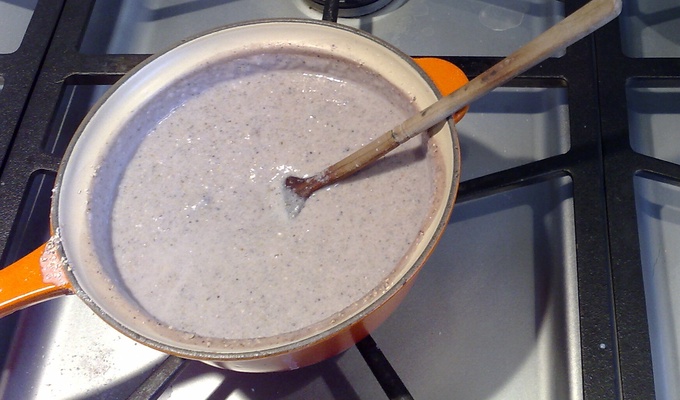Aztec cuisine is the cuisine of the former Aztec Empire and the Nahua peoples of the Valley of Mexico prior to European contact in 1519.
The most important staple was corn (maize), a crop that was so important to Aztec society that it played a central part in their mythology. Just like wheat in much of Europe or rice in most of East Asia, it was the food without which a meal was not a meal. It came in varieties that differed in color, texture, size and prestige, and was eaten as corn tortillas, tamales or ātōlli, maize gruel. The other constants of Aztec food were salt and chili peppers and the basic definition of Aztec fasting was to abstain from these two.
The other major foods were beans, squash and New World varieties of the grains amaranth (or pigweed), and chia. The combination of maize and these basic foods would have provided the average diet. The cooking of maize grains in alkaline solutions, a process called nixtamalization, significantly raised the nutritional value of the common staple.
Water, maize gruels and pulque (iztāc octli), the fermented juice of the century plant (maguey in Spanish), were the most common drinks, and there were many different fermented alcoholic beverages made from honey, cacti and various fruits. The elite took pride in not drinking pulque, a drink of commoners, and preferred drinks made from cacao, among the most prestigious luxuries available. Favored by rulers, warriors and nobles, they were flavored with chili peppers, honey and a long list of spices and herbs.
The Aztec diet included a variety of fish and wild game: various fowl, pocket gophers, green iguanas, axolotls (a type of amphibian, much like a salamander), a type of crayfish called acocil, and a great variety of insects, larvae and insect eggs.
They also domesticated turkeys, duck and dogs as food and at times ate meat from larger wild animals such as deer, but none of these were a major part of their diet. They ate various mushrooms and fungi, including the parasitic corn smut, which grows on ears of corn.

